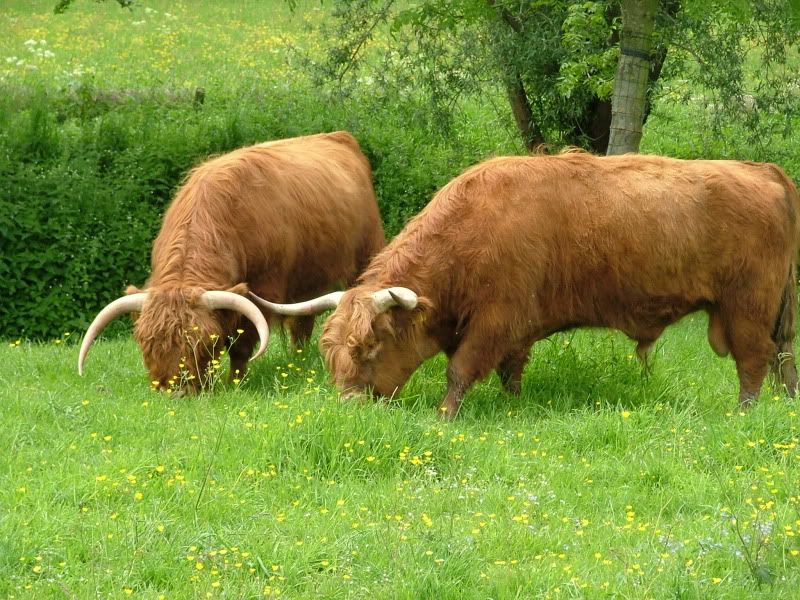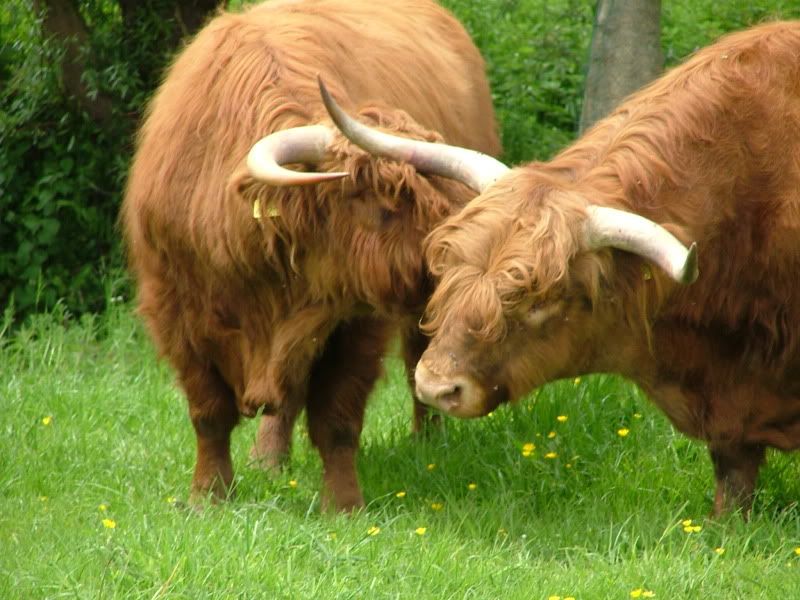Post by Dave on Jul 18, 2010 22:30:05 GMT
Life is one big adventure and every week seems to bring a new one for Carol and me as we make sure we live life to the full and see and do all we can together. That’s fine and I have no problem with that, but as I sit here and write this, my legs are letting me know just what they think of me for taking them on such a long walk.
It’s OK for Carol as she walks everywhere but for a short overweight guy who spends all day driving around in a van, walking and for nearly four hours when you add the other bits we did apart form the main walk, is asking just a bit too much. Mind you I can’t lay any blame on her as its me who picks out all the walks we do, but those last few miles I was down to a snails pace and as Carol was busting to go to the toilet I let her walk on and found myself all alone and I told my legs to stop their complaining and get me back to Princetown.
The funny thing is I picked this walk because it is nearly all along the disused railway line that ran from Princetown to Yelverton as I knew it would mostly be flat and have no muscle pulling climbs up any big hills and yet still I ended up suffering but hey who cares as it was another magic afternoon and evening spent in the company of the beautiful lady known as Carol.
We did not leave Paignton until 2pm much later than planned, but that was my fault for talking to the Avon lady for well over an hour and she now knows my entire life history and also of Mr Davybeat. We got to Princetown just before 3pm and found the car park full and so had to sit there for a short while waiting for someone to leave, thankfully it was not to long a wait before we could get started on our walk.
You walk back to the entrance of the car park and turn left heading for the town’s fire station and just past the station there is a path on the left and it is clearly sign posted to the disused railway line. A few yards later you will see the only remaining commercial building that was a part of the railway, there is a very washed out and faded poster on the door that I did my best to make out the words on it and if I got it right, nearby is the station masters house and cottages.
The first few hundred yards of the path must be a path that now runs behind where I believe the station would have been, but it very soon turns into the track bed itself and even then for a while as you walk along it, you do not get the sensation you are walking on what was once a railway line.
That soon changes as you come to what is a very small bridge structure the trains went over and once on the other side of it, the track is banked up and then you really can see it was a railway line. Carol stayed on the track bed and I went down the bank to see the bridge from below and it was here I was a naughty boy and had a secret pee.
Some time later after the track twists and turns around gentle bends you come to another small bridge structure and once again I went down the bank to look at this one, someone had planed a flowering plant there and arranged some small stones in the shape of a heart, how sweet.
Further on again and you come the first cutting you walk through its not very deep but look out for two bound stones engraved with the initials 'PCWW 1917'. These stones, erected by the Plymouth Corporation Waterworks, mark the catchment area for Burrator Reservoir.
One mile further on you'll reach a turning on your right which leads to Foggintor Quarry once one of the largest granite quarries on Dartmoor, its well worth going to have a look at it but you will have to come back to the track bed again to carry on the walk to Kings Tor. When you do get to it the entrance looks over grown and very wet but if you carry further on you will see a small quarry that you can walk through into the much larger one. It’s now full of water and looked beautiful and Carol and I sat there for a while all alone and carefree holding hands.
From the end of the 18th century stone had been taken from Foggintor Quarry to be used in the building of much of Princetown. With the advent of the nearby Plymouth - Dartmoor railway 1823 to 1953 (horse drawn to start with) the famous Dartmoor granite found its way further afield. Foggintor granite was sent all over the country, one notable example being Trafalgar Square, where it provides Nelson with his Column. Foggintor Quarry had a total of seven circular crane bases.
Quarry operations were substantial enough to warrant building not only offices, but also cottages, a day school and chapel, all just beside its canyon-like quarry entrance. Little of them now remain except their ground-plans, one of the last walls of any height belongs to the manager's house.
The main walk continues along the old railway track to King's Tor, from here you can look across to Vixen Tor and the working quarry at Merrivale. The track skirts around the back of King's Tor and emerges close to the disused Swelltor Quarry. Here the track divides - you need to follow the left fork as it heads up the old quarry siding.
By the time we got this far it was late afternoon and it seemed we were the only people still left on the Moor, when we were over at Foggintor Quarry we looked all the way over to Kings Tor and could see a group of people standing on the top of it, climbing up it at this stage of the walk with the legs just starting to let me know enough was enough was not an option.
I still ended up with a horrible walk up a very large bank as I had failed to check the instructions I had printed and took with me and Carol had taken the correct left fork that leads into Swelltor Quarry, while I was walking on the main line to Yelverton. She was getting higher and I was dropping deeper down the valley and I shouted to her that she was going the wrong way. “Don’t think so” came back the reply and so I then decided to check the instructions and get back on the track she was on.
She said nothing just gave me the cheekiest smile that said I should have known she would have taken the right track as you David always take the wrong one and end up getting us lost.
Just outside the quarry you will see a row of granite beams on your left originally cut for the widening of London Bridge in 1902. They look perfect and have been there for over a hundred years and the only question is why were they not used? Did the bridge not end up being widened? Or were too many just made? The left track that we were on was a rail track that went into the quarry and while it’s covered in grass, you can see many of the old wooden sleepers still in place and many old metal pins sticking up from the ground.
There is the remains of one old building and one shot I took I will simply call “A room with a view” We carried on walking through the quarry and came to anther split that was not mentioned on the sheet, Carol lead me to the left again and we got to one point where I was just about to say you got it wrong this time love, when we turned a corner and was able to walk up a steep rocky part that over looked a very small but deep looking cutting in the rock full of water.
We left the quarry and stayed on the track and it joined a path coming from the south side of the quarry and may well have been the path we should have taken and not Carols left one, but hers turned out to be a very welcome short cut and we would also not have seen that deep cutting full of water.
Soon we came back to the track bed right at the point where you can branch off out to Foggintor Quarry and so we turned right heading back to Princetown and boy did Princetown seem so much further way than I remembered and also hoped.
One of the magical things about any walks on Dartmoor is that you so often share your walks with ponies, cattle and sheep as we did today, it never ceases to amaze me how some people get so excited when they drive on a Dartmoor road and see cows walking on them, or sheep or the famous Dartmoor ponies, what is a shame is some do not know they need to respect the Moor and keep their speeds down as you never know what’s around the next corner.
By the time I got back to the car park Carol had been to the ladies and probably had a sleep for half an hour and it was just our luck the café takeaway closed its doors just a few seconds before we got to it and we were starving and in need of some food.
As if I had not punished myself enough I said to Carol we’ll walk up to the main prison gate so I can get a picture of it, I did hear on the news the other day they are thinking about closing down Dartmoor Prison. I then told her there was a pub at the other end of the village that I believed did food and so we headed off to go and check it out.
It claims to be the older building in Princetown being built as a coaching hose in 1785 and as I was about to take a picture of it I heard a funny car engine noise coming up the road. It was only a grand looking vintage car and so I waited to take my shot of the pub just as the car was passing it.
We went inside and read the menu board and it was all the very fancy stuff that I can’t eat and anyway you would have needed to be a king to afford just the starters and so we left Princetown still very hungry and in search of some food.
I believe the date is correct when the pub was build because in In 1780, a farm was reclaimed on the site of an ancient tenement near the Two Bridges, and in 1785, Sir Thomas Tyrwhitt set about improving the moor at a place which he named Tor Royal, about 1 km (0.6 miles) south-east of Princetown. He made an estate and built a house in 1798. Later the road from Tavistock to Princetown was built, as well as the other roads that now cross the Moor.
He also proposed that a prison be built on Dartmoor to house the thousands of captives of the Napoleonic Wars and the later War of 1812, who had become too numerous to lodge in the prisons and prison-ships at Plymouth. The site was given by the Prince of Wales, who held the lands of the Duchy of Cornwall to which all the Moor belonged. This is why the town is named Princetown. Dartmoor Prison was built in 1806 at a cost of £130,000 and at one time had a capicity between 7,000 and 9,000 prisoners.
A small town grew up near the prison. Two large inns were built during the war. Many of the prisoners had prize-money to come from their own country; many others made their own in their hammocks at night, even forging Bank of England and local bank notes, which they passed off in the great daily market held in the prison. With the closing of the prison in 1816, the town almost collapsed, but the completion of the Dartmoor Railway in 1823 brought back many people to the granite quarries. The prison remained derelict until 1851, when it was reopened for prisoners serving long sentences. It has since been considerably extended.
We drove through Ashburton and saw nothing open and so headed for Newton Abbot where I was to get a bit of a shock. I said to Carol the first place we can try is the Torbay Fish Café a place Merse knows well and the former owners. I did not epect it would be open on a Sunday night but it was and is now owned my a man from another country( please don’t ask me which one) and while it still has a frying range and does the normal fish and chips, it also does kebabs etc.
We sat in the car across the road from the flea pit and ate our food and then made our way back home to Paignton, only by the time I got home my legs decided enough really was enough and had stiffened up so much in the car I had a hell of a job to make them take me the last few hundred yards to get me inside my home
Fire station

Old railway building

Off we go



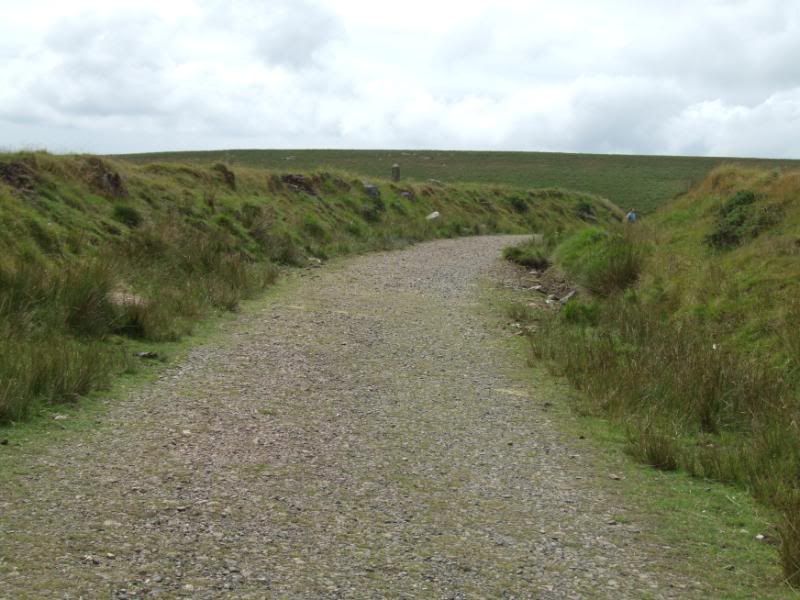
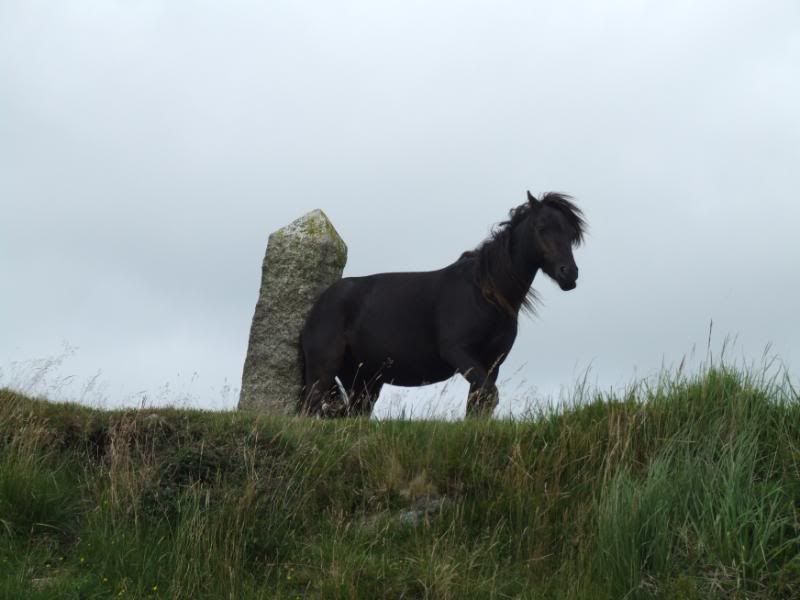


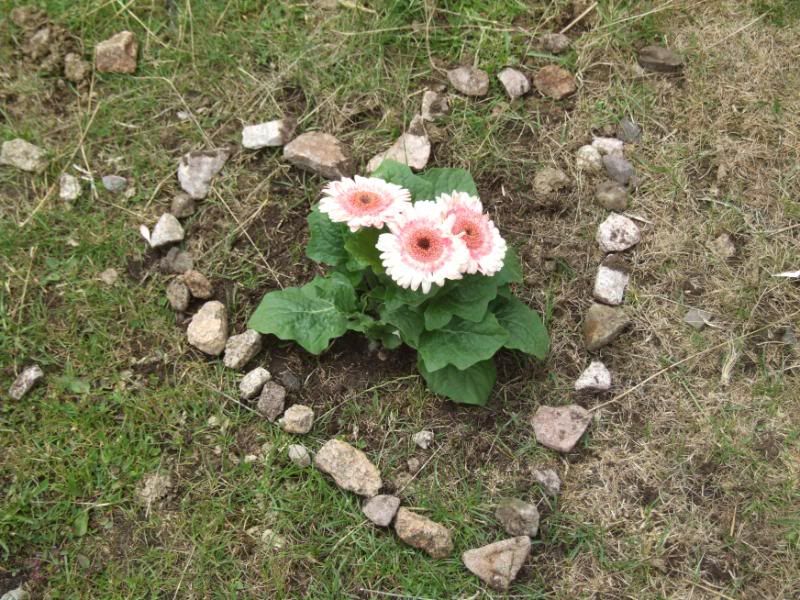
Foggintor Quarry
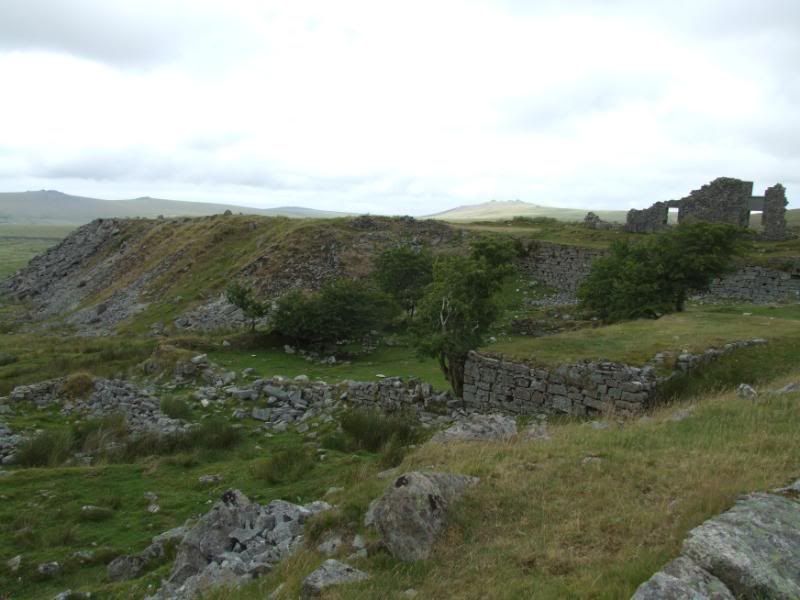




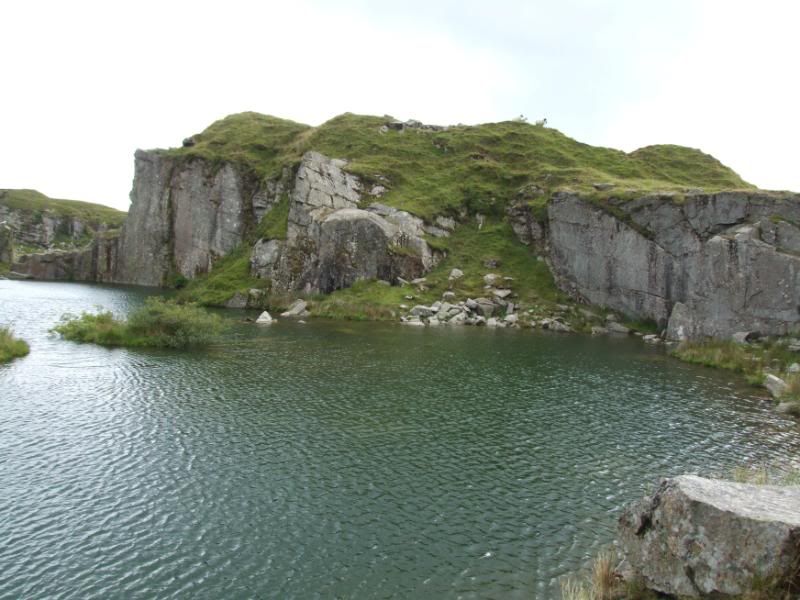
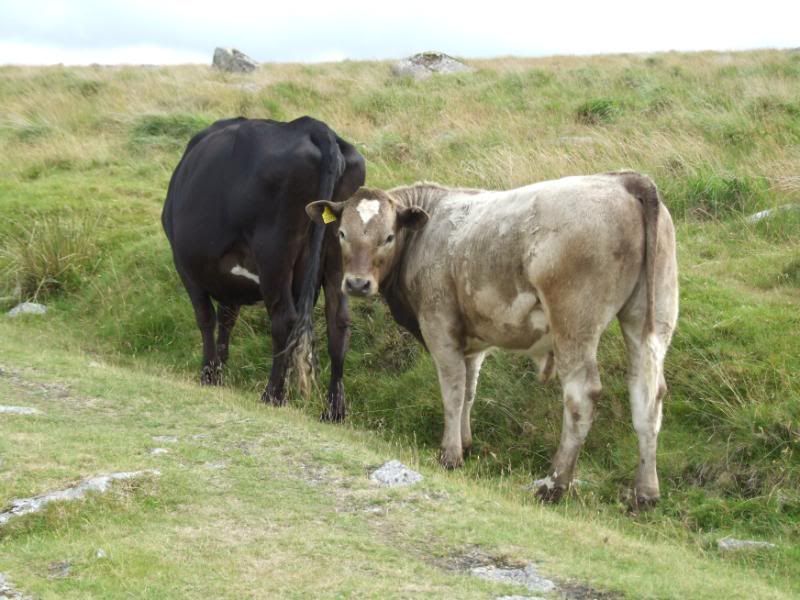

Around the back of Kings Tor
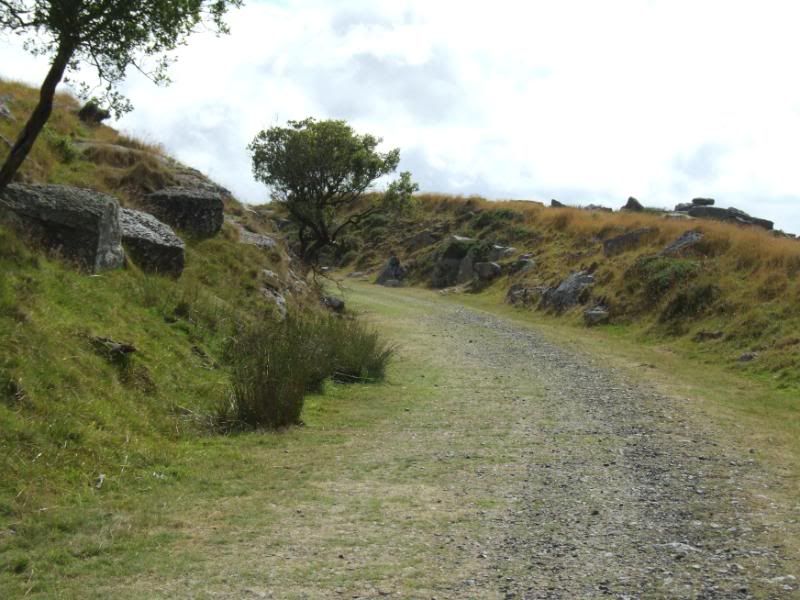
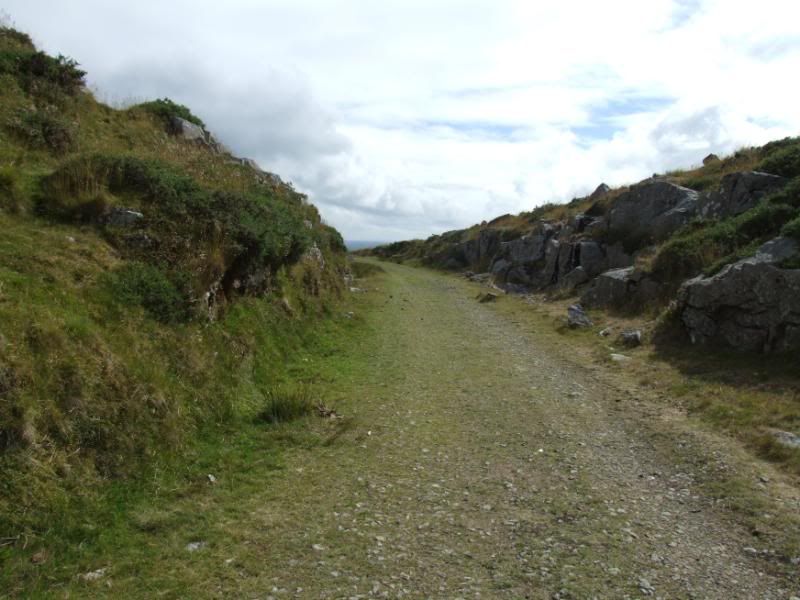
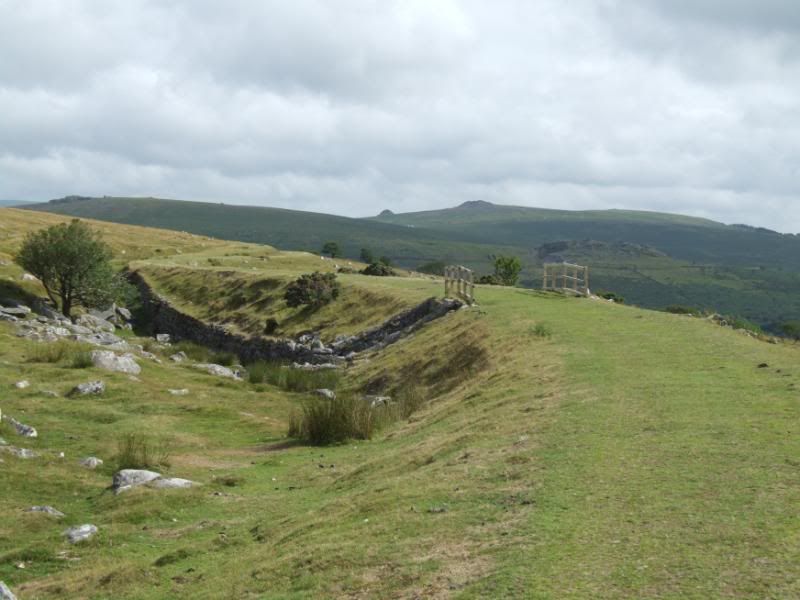
Swelltor Quarry

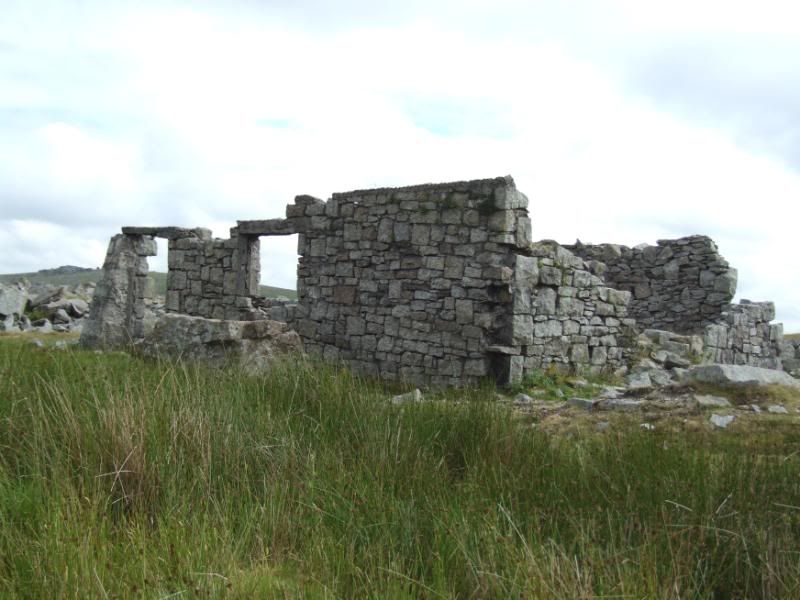

Room with a view


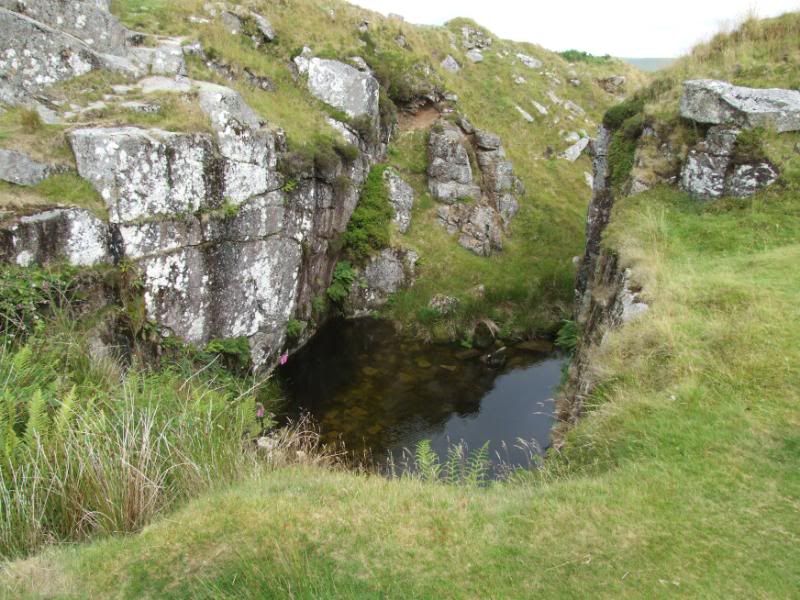
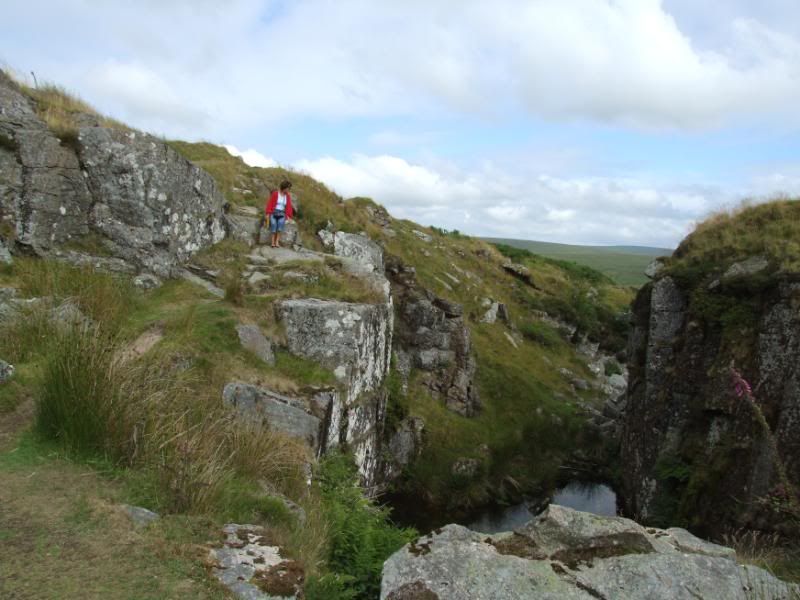

Please don't open them for me
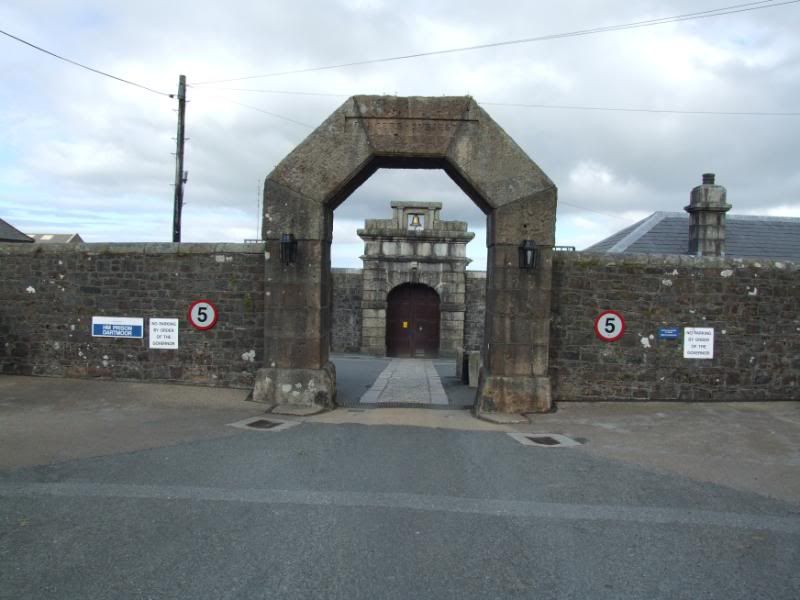
The pub
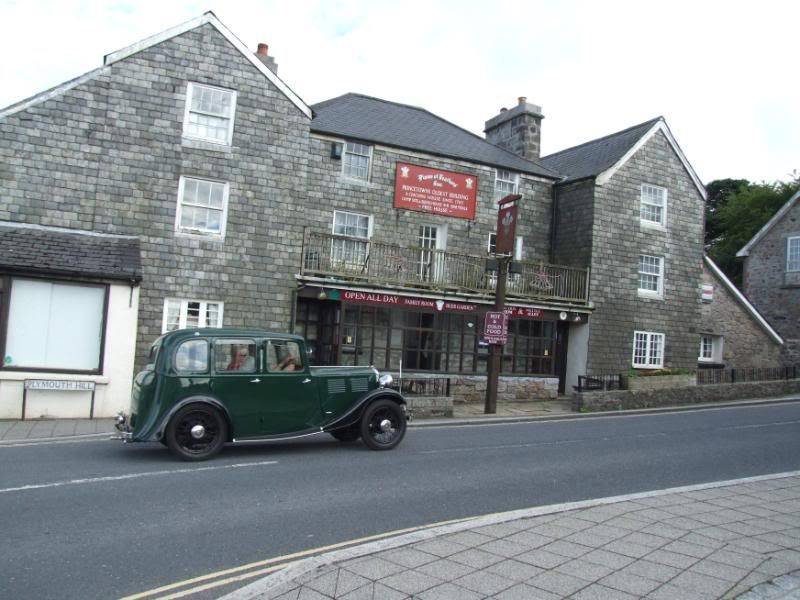
It’s OK for Carol as she walks everywhere but for a short overweight guy who spends all day driving around in a van, walking and for nearly four hours when you add the other bits we did apart form the main walk, is asking just a bit too much. Mind you I can’t lay any blame on her as its me who picks out all the walks we do, but those last few miles I was down to a snails pace and as Carol was busting to go to the toilet I let her walk on and found myself all alone and I told my legs to stop their complaining and get me back to Princetown.
The funny thing is I picked this walk because it is nearly all along the disused railway line that ran from Princetown to Yelverton as I knew it would mostly be flat and have no muscle pulling climbs up any big hills and yet still I ended up suffering but hey who cares as it was another magic afternoon and evening spent in the company of the beautiful lady known as Carol.
We did not leave Paignton until 2pm much later than planned, but that was my fault for talking to the Avon lady for well over an hour and she now knows my entire life history and also of Mr Davybeat. We got to Princetown just before 3pm and found the car park full and so had to sit there for a short while waiting for someone to leave, thankfully it was not to long a wait before we could get started on our walk.
You walk back to the entrance of the car park and turn left heading for the town’s fire station and just past the station there is a path on the left and it is clearly sign posted to the disused railway line. A few yards later you will see the only remaining commercial building that was a part of the railway, there is a very washed out and faded poster on the door that I did my best to make out the words on it and if I got it right, nearby is the station masters house and cottages.
The first few hundred yards of the path must be a path that now runs behind where I believe the station would have been, but it very soon turns into the track bed itself and even then for a while as you walk along it, you do not get the sensation you are walking on what was once a railway line.
That soon changes as you come to what is a very small bridge structure the trains went over and once on the other side of it, the track is banked up and then you really can see it was a railway line. Carol stayed on the track bed and I went down the bank to see the bridge from below and it was here I was a naughty boy and had a secret pee.
Some time later after the track twists and turns around gentle bends you come to another small bridge structure and once again I went down the bank to look at this one, someone had planed a flowering plant there and arranged some small stones in the shape of a heart, how sweet.
Further on again and you come the first cutting you walk through its not very deep but look out for two bound stones engraved with the initials 'PCWW 1917'. These stones, erected by the Plymouth Corporation Waterworks, mark the catchment area for Burrator Reservoir.
One mile further on you'll reach a turning on your right which leads to Foggintor Quarry once one of the largest granite quarries on Dartmoor, its well worth going to have a look at it but you will have to come back to the track bed again to carry on the walk to Kings Tor. When you do get to it the entrance looks over grown and very wet but if you carry further on you will see a small quarry that you can walk through into the much larger one. It’s now full of water and looked beautiful and Carol and I sat there for a while all alone and carefree holding hands.
From the end of the 18th century stone had been taken from Foggintor Quarry to be used in the building of much of Princetown. With the advent of the nearby Plymouth - Dartmoor railway 1823 to 1953 (horse drawn to start with) the famous Dartmoor granite found its way further afield. Foggintor granite was sent all over the country, one notable example being Trafalgar Square, where it provides Nelson with his Column. Foggintor Quarry had a total of seven circular crane bases.
Quarry operations were substantial enough to warrant building not only offices, but also cottages, a day school and chapel, all just beside its canyon-like quarry entrance. Little of them now remain except their ground-plans, one of the last walls of any height belongs to the manager's house.
The main walk continues along the old railway track to King's Tor, from here you can look across to Vixen Tor and the working quarry at Merrivale. The track skirts around the back of King's Tor and emerges close to the disused Swelltor Quarry. Here the track divides - you need to follow the left fork as it heads up the old quarry siding.
By the time we got this far it was late afternoon and it seemed we were the only people still left on the Moor, when we were over at Foggintor Quarry we looked all the way over to Kings Tor and could see a group of people standing on the top of it, climbing up it at this stage of the walk with the legs just starting to let me know enough was enough was not an option.
I still ended up with a horrible walk up a very large bank as I had failed to check the instructions I had printed and took with me and Carol had taken the correct left fork that leads into Swelltor Quarry, while I was walking on the main line to Yelverton. She was getting higher and I was dropping deeper down the valley and I shouted to her that she was going the wrong way. “Don’t think so” came back the reply and so I then decided to check the instructions and get back on the track she was on.
She said nothing just gave me the cheekiest smile that said I should have known she would have taken the right track as you David always take the wrong one and end up getting us lost.
Just outside the quarry you will see a row of granite beams on your left originally cut for the widening of London Bridge in 1902. They look perfect and have been there for over a hundred years and the only question is why were they not used? Did the bridge not end up being widened? Or were too many just made? The left track that we were on was a rail track that went into the quarry and while it’s covered in grass, you can see many of the old wooden sleepers still in place and many old metal pins sticking up from the ground.
There is the remains of one old building and one shot I took I will simply call “A room with a view” We carried on walking through the quarry and came to anther split that was not mentioned on the sheet, Carol lead me to the left again and we got to one point where I was just about to say you got it wrong this time love, when we turned a corner and was able to walk up a steep rocky part that over looked a very small but deep looking cutting in the rock full of water.
We left the quarry and stayed on the track and it joined a path coming from the south side of the quarry and may well have been the path we should have taken and not Carols left one, but hers turned out to be a very welcome short cut and we would also not have seen that deep cutting full of water.
Soon we came back to the track bed right at the point where you can branch off out to Foggintor Quarry and so we turned right heading back to Princetown and boy did Princetown seem so much further way than I remembered and also hoped.
One of the magical things about any walks on Dartmoor is that you so often share your walks with ponies, cattle and sheep as we did today, it never ceases to amaze me how some people get so excited when they drive on a Dartmoor road and see cows walking on them, or sheep or the famous Dartmoor ponies, what is a shame is some do not know they need to respect the Moor and keep their speeds down as you never know what’s around the next corner.
By the time I got back to the car park Carol had been to the ladies and probably had a sleep for half an hour and it was just our luck the café takeaway closed its doors just a few seconds before we got to it and we were starving and in need of some food.
As if I had not punished myself enough I said to Carol we’ll walk up to the main prison gate so I can get a picture of it, I did hear on the news the other day they are thinking about closing down Dartmoor Prison. I then told her there was a pub at the other end of the village that I believed did food and so we headed off to go and check it out.
It claims to be the older building in Princetown being built as a coaching hose in 1785 and as I was about to take a picture of it I heard a funny car engine noise coming up the road. It was only a grand looking vintage car and so I waited to take my shot of the pub just as the car was passing it.
We went inside and read the menu board and it was all the very fancy stuff that I can’t eat and anyway you would have needed to be a king to afford just the starters and so we left Princetown still very hungry and in search of some food.
I believe the date is correct when the pub was build because in In 1780, a farm was reclaimed on the site of an ancient tenement near the Two Bridges, and in 1785, Sir Thomas Tyrwhitt set about improving the moor at a place which he named Tor Royal, about 1 km (0.6 miles) south-east of Princetown. He made an estate and built a house in 1798. Later the road from Tavistock to Princetown was built, as well as the other roads that now cross the Moor.
He also proposed that a prison be built on Dartmoor to house the thousands of captives of the Napoleonic Wars and the later War of 1812, who had become too numerous to lodge in the prisons and prison-ships at Plymouth. The site was given by the Prince of Wales, who held the lands of the Duchy of Cornwall to which all the Moor belonged. This is why the town is named Princetown. Dartmoor Prison was built in 1806 at a cost of £130,000 and at one time had a capicity between 7,000 and 9,000 prisoners.
A small town grew up near the prison. Two large inns were built during the war. Many of the prisoners had prize-money to come from their own country; many others made their own in their hammocks at night, even forging Bank of England and local bank notes, which they passed off in the great daily market held in the prison. With the closing of the prison in 1816, the town almost collapsed, but the completion of the Dartmoor Railway in 1823 brought back many people to the granite quarries. The prison remained derelict until 1851, when it was reopened for prisoners serving long sentences. It has since been considerably extended.
We drove through Ashburton and saw nothing open and so headed for Newton Abbot where I was to get a bit of a shock. I said to Carol the first place we can try is the Torbay Fish Café a place Merse knows well and the former owners. I did not epect it would be open on a Sunday night but it was and is now owned my a man from another country( please don’t ask me which one) and while it still has a frying range and does the normal fish and chips, it also does kebabs etc.
We sat in the car across the road from the flea pit and ate our food and then made our way back home to Paignton, only by the time I got home my legs decided enough really was enough and had stiffened up so much in the car I had a hell of a job to make them take me the last few hundred yards to get me inside my home
Fire station

Old railway building

Off we go








Foggintor Quarry








Around the back of Kings Tor



Swelltor Quarry



Room with a view





Please don't open them for me

The pub





